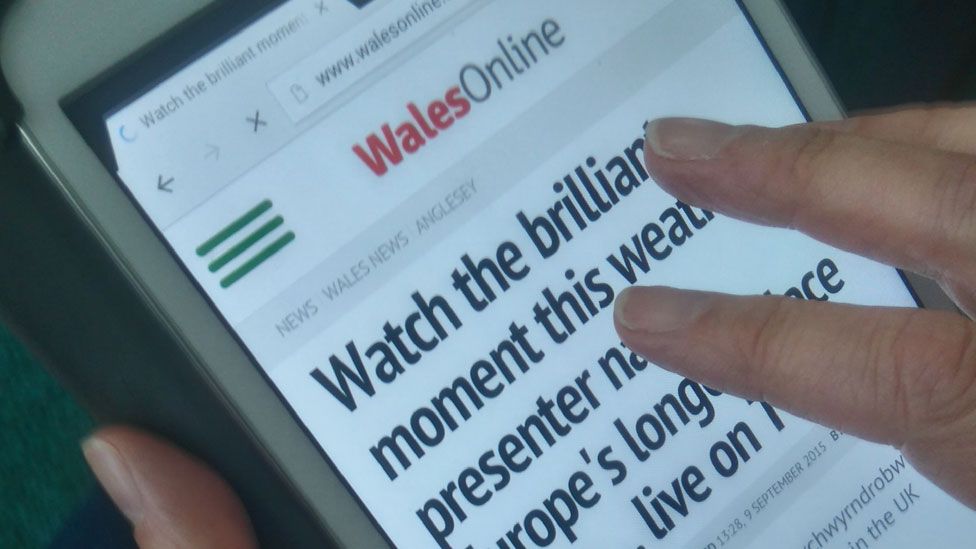The 25-Second Trick For Popular News
The 25-Second Trick For Popular News
Blog Article
The Best Strategy To Use For Popular News
Table of ContentsA Biased View of Popular NewsThe 4-Minute Rule for Popular NewsThe Basic Principles Of Popular News The 20-Second Trick For Popular News
Age is also a consider the means individuals watch the role of social media. Younger social media news consumers are more probable to say it has influenced their learning for the better. About half of social media sites information customers ages 18 to 29 (48%) state information on social networks makes them better informed, compared with 37% of those 30 to 49, 28% of those 50 to 64, and 27% of those 65 and older.Reporters weigh information values when establishing whether or not to cover an event or announcement. Probably the most important component of newsworthiness is whether or not the news thing being communicated influences a news electrical outlet's audience.
Closeness is essential. Reporters are interested in points that impact their areas. For instance, research study on a state's new tax obligation code most likely won't create the very same interest throughout state borders. Sometimes specialists can help localize a bigger nationwide tale that influences greater than just a city or state. In these instances, it is necessary to be on the hunt for possibilities where subject matter professionals can give insight or where similar jobs might be taking place locally.
If you are publishing newsworthy research study, loop in MarComm prior to the post being released to make sure that the pitch can stress the newest element of the story: the publication of the research. Events and announcements that include prominent figures are most likely to create media insurance coverage. Visits from national figures frequently require months of preparation due to anticipated community interest.
Facts About Popular News Uncovered

Human passion aspects can include information worth to various other tales that might seem doing not have in the other values. The novelty or strangeness of a situation can assist affect whether an information electrical outlet is likely to cover a story. While this is not an extensive checklist, examining to see if your story or event has these high qualities prior to contacting us will help you identify which aspects hold the most information value.

Not known Incorrect Statements About Popular News
There is additionally substantial proof that even more consumers can start to spend for news in the futureif authors can comprehend them and serve them well. Fifty percent of those who do not pay for information actively look for information and look like subscribers in different means. Popular News. And nearly 2 in 10 of those who do not register for news currently suggest they are inclined to begin to pay in the future
We then ask a collection of inquiries to identify whether people spend for specific kinds of news sources. We asked individuals to call the resources they use most oftenwhether they pay for them or nothow they utilize them, the details things they think about vital about them, and some related concerns concerning the price and worth of that source.
People are drawn to news as a whole for 2 factors over others: A need to be educated citizens (newspaper subscribers specifically are extremely inspired by this) and since the magazine they register for excels at covering particular subjects concerning which those clients specifically care. While there are a host of factors, the No.
Even more than 4 in 10 additionally cite the reality that buddies and household sign up for the exact same product. More than a third of people claim they initially subscribed in feedback to a price cut or promo. In print, individuals likewise are moved heavily to subscribe to obtain coupons that conserve them cash, something that has untapped ramifications in digital.
Excitement About Popular News

We asked everyone who told us they have a routine cost-free source of news exactly how most likely they would certainly be to spend for it. More than a quarter (26 percent) say they would go to additional resources the very least somewhat likely to begin paying for itand 10 percent are extremely or exceptionally most likely. These likely payers tend to be news hunters, and they likewise often tend to be individuals that currently spend for an information subscription along with the source they follow absolutely free.
Of those who do pay, 54 percent sign up for papers in print or digitally, which stands for 29 percent of Americans on the whole. A lot of them get a print publication along with their paper and spend for two to four news resources in total amount, some even much more. And while 53 percent are long-time customers (5+ years), greater than a quarter (27 percent) have bought their paper registration within the past year.
Few print customers assume it most likely they will switch to a digital-only membership in the future, and over half of those who go like electronic have actually never ever paid for a print version of the exact same source. internet Popular News. Completely 75 percent of paper payers claim they primarily read the paper in print, while 21 percent are mostly digital individuals, and 4 percent explain themselves as equally divided
Report this page